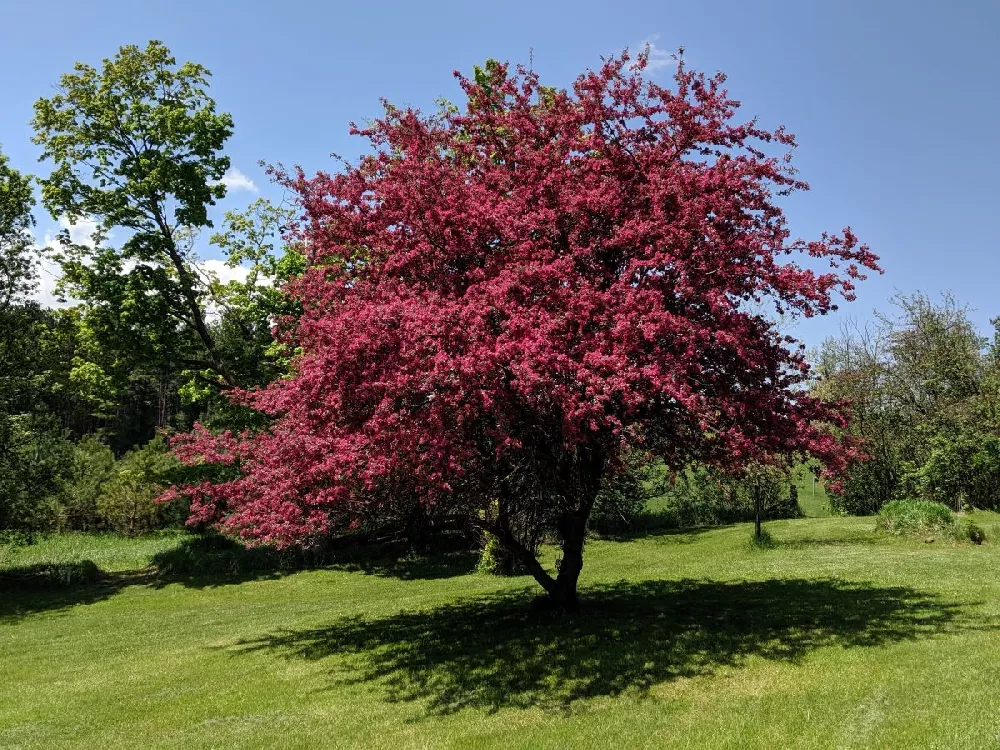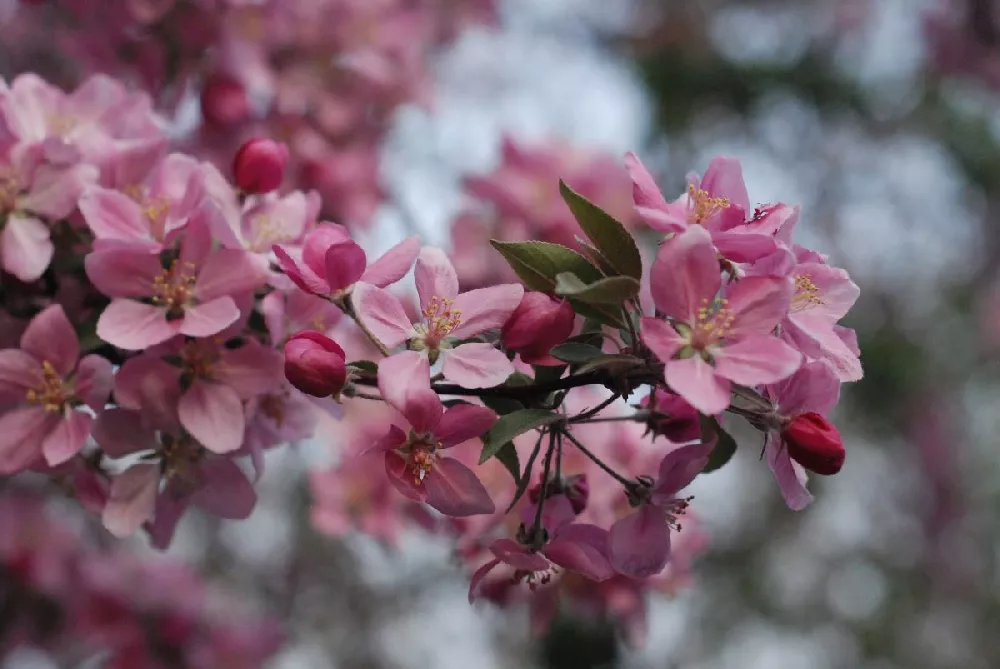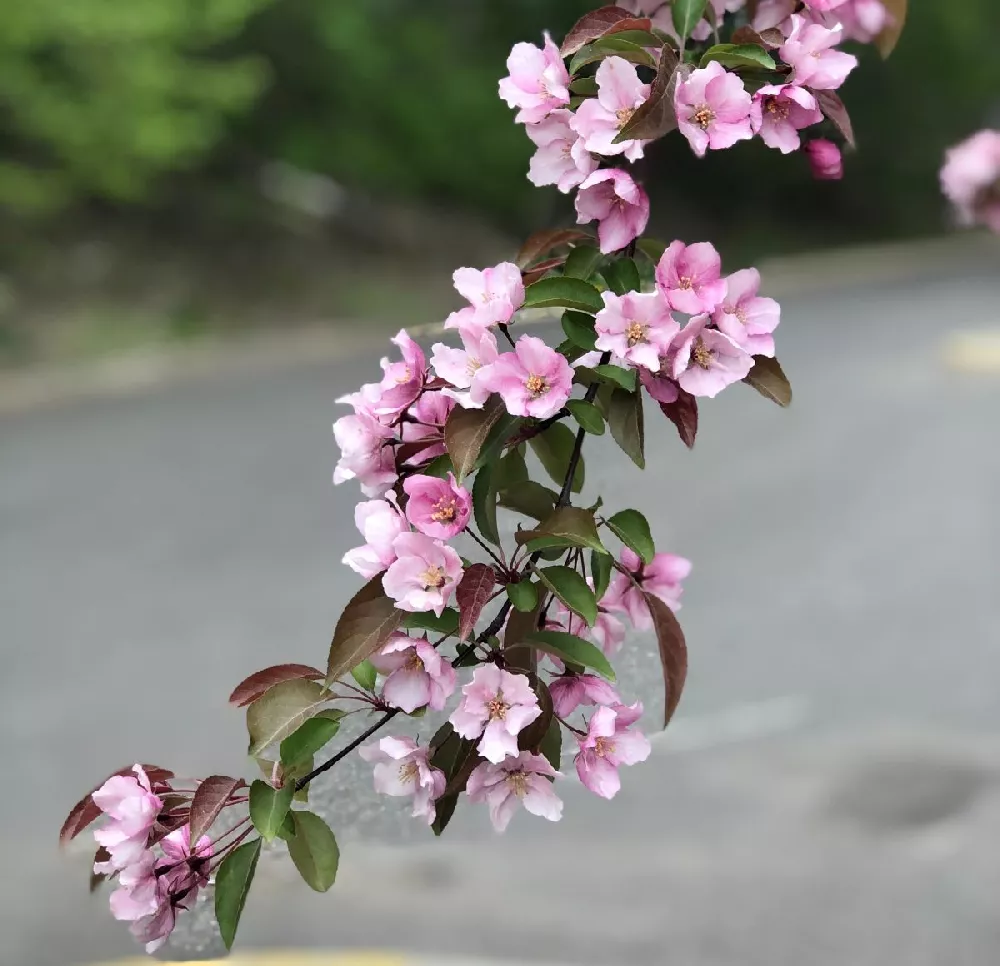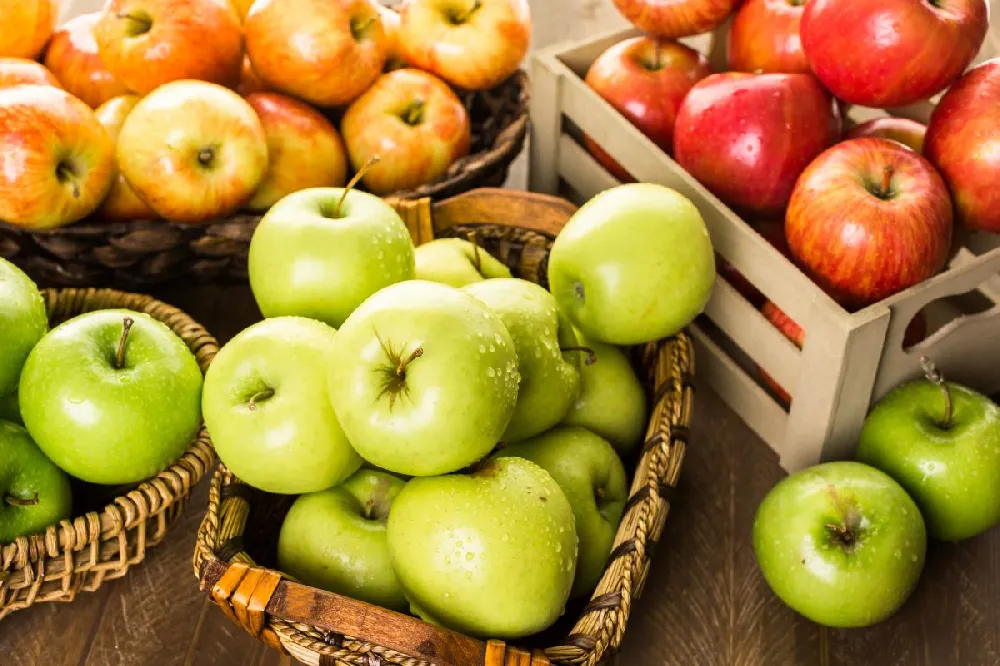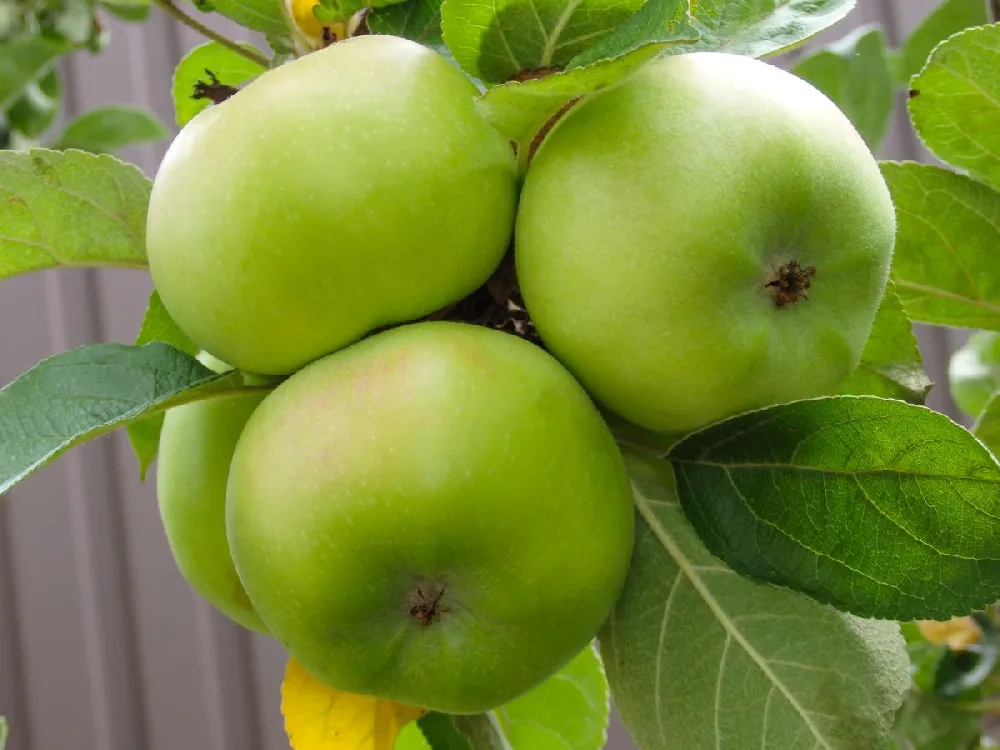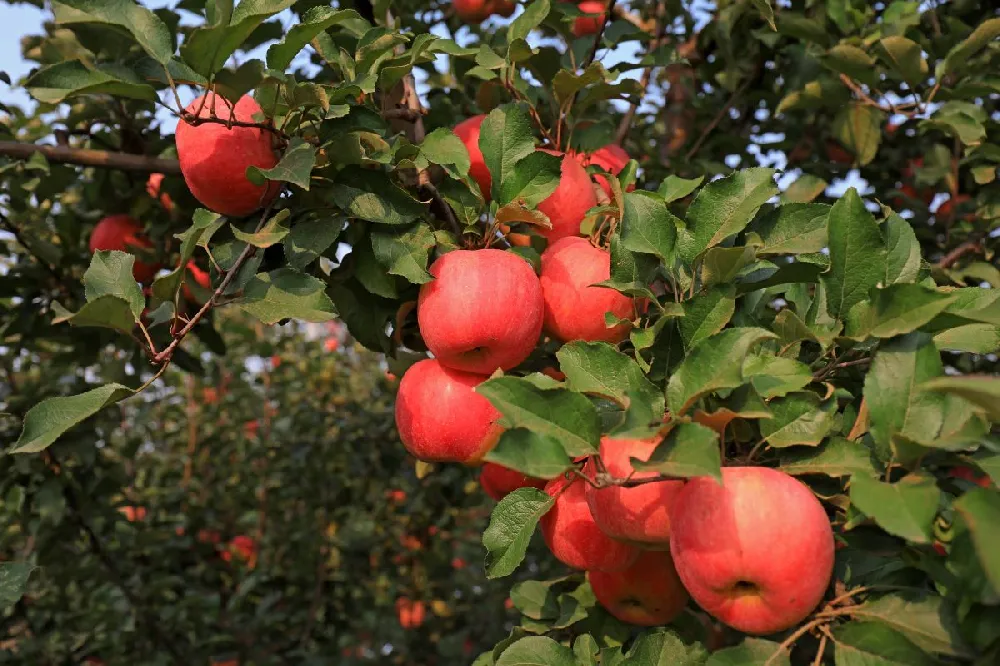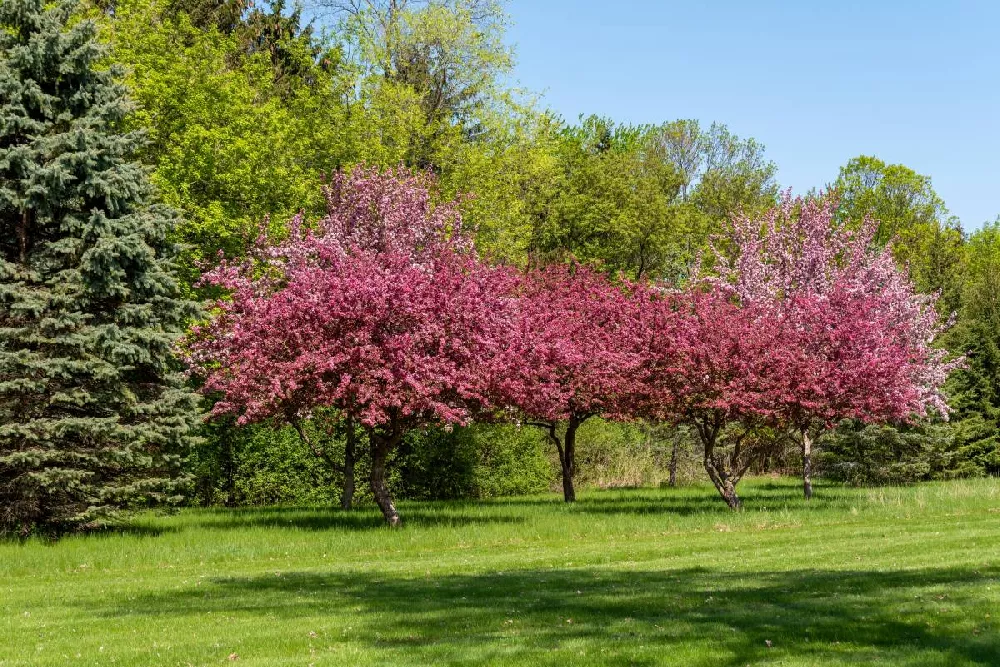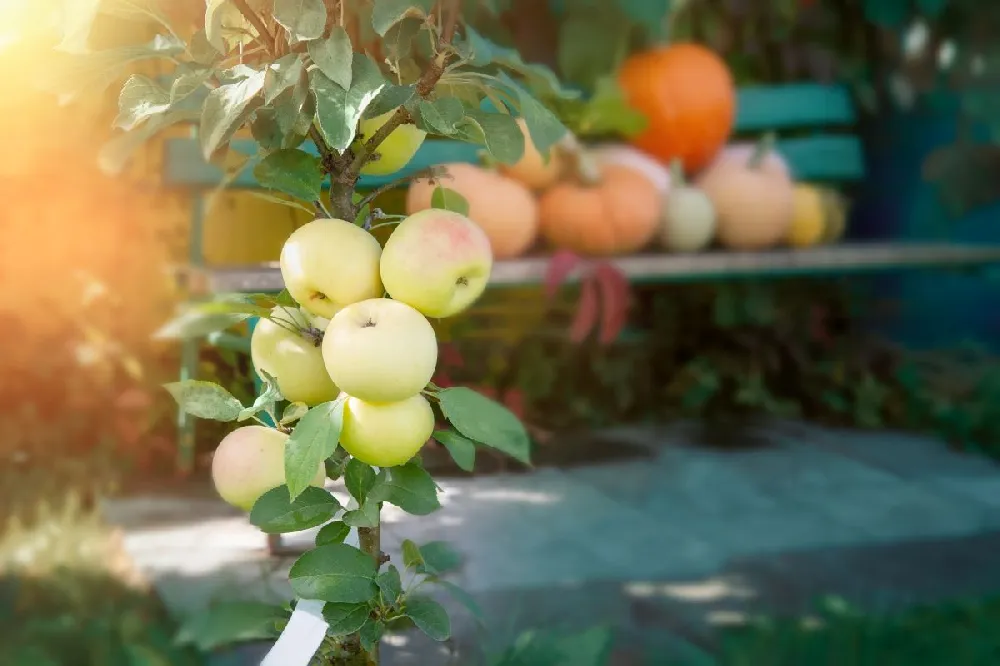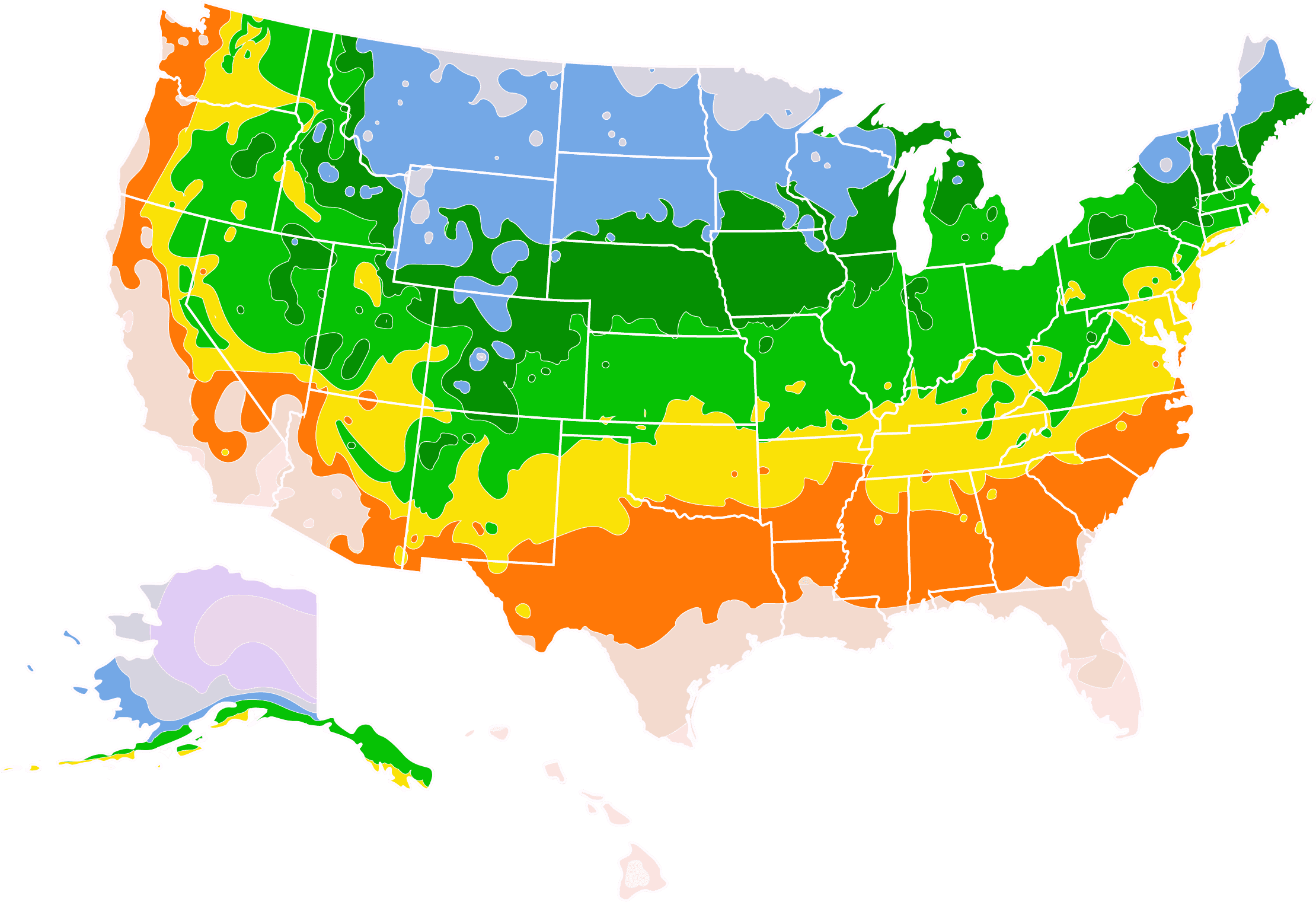- Home >
- Flowers >
- Trees and Plants with Pink Flowers >
- Profusion Crabapple Tree
Profusion Crabapple Tree for Sale - Buying & Growing Guide
- Ships in 1-2 days
- 1-Year Warranty Eligible
- Pots or accessories are not included unless specified in the product options.
Shipping Details:
Once your order is shipped, you’ll receive an email with a tracking number and estimated delivery date. Most orders ship immediately, but some items are seasonal and may only ship in spring or fall. These products are noted on the website.
The profusion crabapple tree lives up to its name as it bursts into spring with a spectacular display of dark pink flowers. Those flowers precede a set of leaves that hold a hue that is richer and more eye-catching than the foliage of most other trees you can find. Fortunately, this ornamental plant, Malus 'Profusion,' is quite tough, as well as it can withstand urban pollution and resist deer browsing.
- The profusion crabapple tree has many dark pink flowers that bloom in spring.
- The leaves of this plant have a dark reddish color that complements the blooms.
- This plant tolerates urban pollution and deer browsing.
Plant Care
Sunlight

It is best for a profusion crabapple tree to grow in a location that receives at least 6 hours of daily light.
Watering
Water weekly during the first few growing seasons. Water during harsh droughts after establishment.
Fertilizing

Fertilize this tree once per year in the early spring with a balanced fertilizer mix.
Planting and Care
Planting instructions
Start the planting process for your profusion crabapple tree by digging a hole that is as deep as the root ball is tall and at least twice as wide. Place your tree in the hole and backfill with nutrient-rich soil while supplying plenty of water. Finish the process by applying a layer of mulch to help maintain consistent soil moisture. The location where you plant this tree should receive at least 6 hours of light per day, and the soil in that location should be slightly acidic.
Watering and nutrients
You should water a newly planted profusion crabapple tree about once per week during the first two growing seasons. After two seasons, your tree should be well established, at which point it will be capable of surviving drought. You’ll need to water a mature profusion crabapple tree only during long periods of hot and dry weather. You can fertilize this plant once per year in the early spring using a fertilizer that has equal amounts of nitrogen, phosphorus and potassium.
Pollination
The profusion crabapple tree is a self-fertile tree that will bloom with many flowers in early spring. Those flowers are not only incredibly beautiful, but they are also attractive to local pollinators. You can expect honeybees to be among the creatures that arrive at your profusion crabapple tree to feed on its nectar and conduct pollination in the process. After successful pollination, this plant will produce a set of round dangling fruits that can persist into winter.
Pruning
Your profusion crabapple tree will grow best when you perform regular pruning. Pruning can take place at two different times of the year. The first pruning opportunity for this tree occurs at the end of the bloom period, in late spring and early summer. At that time, you should perform light pruning and remove spent blooms. Later, during early winter, you can prune again just after this plant has dropped its leaves and entered a dormancy phase.
Pests, diseases and animals
Many types of crabapple trees can run into several disease issues. For example, cedar apple rust and apple scab are both common for these trees. However, one advantage of growing the profusion crabapple tree is that it proves to be resistant to both disease and pest issues. Along with that general resistance, the profusion crabapple tree also shows a great ability to resist deer browsing. Those capabilities, along with an ability to overcome pollution, make this plant incredibly adaptable.
Harvesting
Although people do not commonly grow crabapple trees for the sake of fruit harvest, it is entirely possible to eat the fruits these trees produce. In their raw form, the crabapples that dangle from the branches of a profusion crabapple tree will likely be quite sour. However, they will taste much better when used in jams and similar dishes. If you want to try these fruits, you should allow them to remain on the tree for as long as you can to develop the best flavor. At times, this can mean harvesting in early winter.
Achieving maximum results
While the fruits of a profusion crabapple tree are well-capable of adding fantastic ornamental value during the fall and winter, they can also be somewhat of a nuisance. Although these fruits won’t often fall on their own, it’s possible for birds and other animals to knock them loose from their branches. When the fruits fall, they can leave a stain if they land on paving. Those falling fruits, along with the leaves, can make for a lot of clean-up during fall.
FAQs
How large does the profusion crabapple tree grow?
The profusion crabapple tree is a small- to medium-sized ornamental tree that often grows to be about 15-20 feet tall. At times, this plant can exceed that size and reach up to 30 feet tall or more. In most instances, the spread of the profusion crabapple tree's canopy will match the tree's overall height. Be sure to note those sizes before planting this tree to ensure you give it enough space to grow.
When will a profusion crabapple tree begin developing fruits?
Whether you hope to enjoy the visual effect that the profusion crabapple tree's fruits provide or you are one of the few who wish to harvest those fruits, you may need to wait a few years to reap your reward. Most crabapple trees, including the profusion crabapple tree, will not begin producing fruits until they are about 3-4 years old. After that, these trees will continue to hang bright red fruits from their branches each year.
Do profusion crabapple trees have deep roots?
Like most other crabapple trees, the profusion crabapple tree does not typically develop a particularly deep root system. Instead, these trees are more likely to spread their roots laterally through the soil. This relative lack of deep roots should make your profusion crabapple tree a bit easier to transplant during its early life if you find that the growing conditions in your initial growing location are insufficient.
Compare Similar Products
You can't add more Product Name - Product size to the cart.
OK